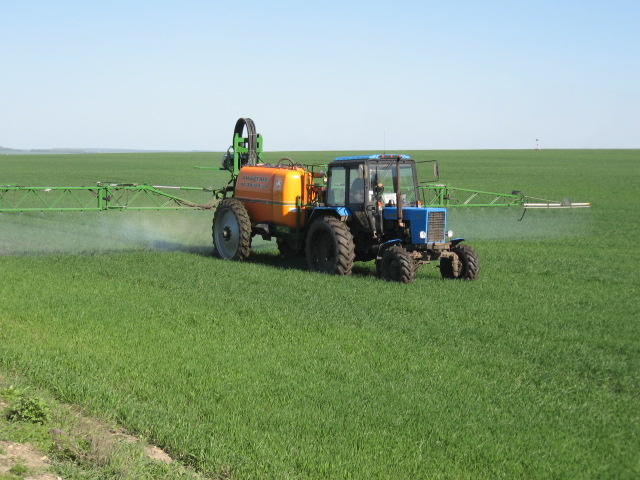Rain fed grain production, being the crucial world food barn, depends on important factors such as crop cycles, soil fertility, pest control, variety and cultivation method. Fertilization is one of the most important issues, since cereals yield and quality are heavily affected by an adequate nutrition regime.

Table 1: characteristics and efficiency of N fertilizers in cereals
The common fertilization practice is similar in most of the grain producing countries: base dressing of granular Nitrogen-based fertilizers incorporated with the seeds during sowing (banding) or distributed evenly by top dressing close to the sowing period (broadcast). Another method is fertilizer solutions applied to the soil before or after sowing in a separate application, by either direct injection or simple dripping.
Phosphorus and Potassium are applied at smaller rates, especially in areas with saturated or fertile soils thanks to former crop cycles such as vegetables, maize or legume. The fact that P and K fertilizers (such as MOP, SOP, SSP and TSP) are considerably more expensive than N fertilizers, leads to small usage.
Beside the application in the beginning of the cultivation period, 2nd application of granular mineral fertilizers is very rare since the cropping period is short and involves additional costs and machinery that will eventually reduce the feasibility of the growth.
Foliar application – choice of cereal growers
Foliar spray application of soluble fertilizers is a very popular method in many cereal producing countries, as a complementary feeding application during early and advanced stages, and in some cases even the major program.
Major highlights with foliar nutrition of cereals:
- Stunted root zone: 80% of the wheat and barley in the northern hemisphere are winter crops (September – July). At april time, after a harsh winter of snow and frosts and average temp. of – 20̊c to -30̊c the soil is frozen, and the active root zone is stunted. The ambient air temp is however under 'work temperature' and the shoots are vital and producing sugars. Foliar application can compensate this situation and boost growth by fast uptake through the leaf and direct assimilation by all the plant tissues. The 1st application during that time is considered as the most important one.
- Foliar feeding is not irrigation dependent method. Cereals can be spray-fed as long as heat, drought or pests do not stress it. Of course, soils water capacity and irrigation are critical to arable crops performance.
- Late N application by granular spreading is another recommended practice, since 60% of the total nutrient uptake occurs in the middle or in the end of shooting. This method is not very popular due to costs and soil compaction reasons. Better effect is achieved with 1-2 foliar applications combined with other agrochemicals.
- Application of Herbicides and Pesticides is anyhow taking place during early and advanced stages. Adding Mineral fertilizer to the solution, as long as it is compatible, will not require a special spray application.
- Quick fix of nutrients deficiencies. Cereal production requires fast response once a deficiency is detected. Later on it is hard to impossible to rectify a nutritional shortage. Moreover, full coverage of NPK + Mg is in common use, and during the past 5 years the role of Micronutrient as a growth enhancer is in focus.
- Other limiting factors like wrong sowing depth, poor microbial activity (poor N supply), acidic / alkaline pH (de-nitrification, unavailability of Macro and Micro nutrients) and continuous mono-cultivation cycles can be compensated by foliar application of complex NPK fertilizers. Generally, with crops like wheat, Barley, corn and oat, the growers like to use 1-1-1 ratio as a 1st application solution during shooting stage and apply 3-5 kg / ha spraying 80 – 120 lit / ha depending on the spray equipment. Other crops related to the oil industry such as Canola, sunflower, soy and sugarbeet share the same practice.
2nd application takes place later on during panicle development and grain fill (up to wax stage of the grain) using dosage of 5kg – 7kg / ha with the same spray vol .
Remark: the 2nd application is less common and likely to be applied in more drastic nutritional situations.




